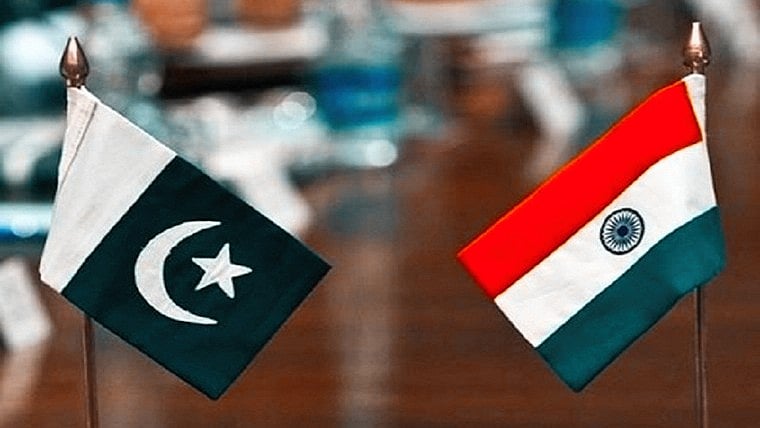The repercussions of the May 7-10 India-Pakistan armed conflict are still unfolding, a fortnight after the ceasefire. Now a battle of narratives is underway.
Pakistan’s prime minister, Shehbaz Sharif, declared a “win” following the ceasefire. This resulted from US president Donald Trump’s misguided and repetitive claims of mediation. Pakistan was naturally delighted over the resurrection of the Kashmir issue. This undermines the BJP argument that the 2019 constitutional changes, dealing with Kashmir as an internal matter, had already resolved the issue.
Pakistan, thus, succeeded in projecting its point of view, at home and abroad. In India, on the other hand, the government was unwilling to convene the Parliament, allow discussion and, thus, generate a political consensus on the future course. Prime Minister Narendra Modi did address the nation and visit an airbase in Punjab to counter Pakistani propaganda about extensive damage. The US claims of mediation were also subtly rejected.
Pakistan, meanwhile, got its IMF bailout and now has elevated its chief of the army staff, General Asim Munir, as field marshal. President Ayub Khan last held that rank. This may reflect the Pakistani military’s mounting control over the civilian government, but publicly it will be projected as a reward for “winning” the military encounter with India. Pakistan’s government, apparently, will rebuild the India-bombed buildings at Muridke and Bahawalpur. These are the headquarters of Lashkar-e-Taiba and Jaish-e-Mohammad, respectively. Pakistan seems unconcerned about the optics of supporting terrorist organisations. This contradicts Pakistani commitments to escape the grey list of the Financial Action Task Force (FATF).
The Indian government, belatedly, realised that despite inflicting disproportionately higher damage on Pakistan, especially in the last phase, the world viewed it as an even exchange. Pakistan managed to capture the international narrative because of superior messaging. Their defence and political sources were accessible and communicative. India, instead, did a top-down micromanagement of media. The choreographed script-reading by foreign secretary Vikrim Misri and two lady mid-level defence officers reflected that.
As Joint Secretary (XP) and Spokesman for the Ministry of External Affairs, I was the main briefer after the May 1998 nuclear tests. The G-7 nations, excepting France, and US allies like Australia targeted India with sanctions and alleged India had endangered global security. The media, especially those from abroad, were briefed continuously and comprehensively. Rakesh Sood, then joint secretary handling disarmament and nuclear issues, briefed me regularly, which I then spun appropriately.
Unlike that, briefings now were tight-fisted. Take the Pakistani claim of downing multiple Indian jets. The government dodged it or even dubbed it as “anti-national” to even discuss it. Similarly, Rahul Gandhi’s unnecessarily repeated argument that the foreign secretary forewarned Pakistan has been ignored. A logical and detailed briefing could have handled both matters. Illustratively, the Indian claim is that it “only” targeted terrorism-related facilities. Pakistan was already on high alert and knew India would exceed Balakot reprisals.
The loss, if any, of Indian planes needs analysing in this context. India could have minimised danger to its fighter aircraft by destroying the Lahore radar station first, critical to any dogfight. But that would have negated the Indian claim of a retaliatory strike only to destroy terrorism-related infrastructure. Thus, it is Pakistan which first attacked Indian military assets, i.e., air force planes. That allowed Indian retaliation against Pakistani air bases. India’s messaging lacked logical storytelling, which is critical to managing international reporting.
The government is now sending multiple all-party delegations abroad to ameliorate the messaging gap. As ambassador to the United Arab Emirates, I handled the Sikandar Bakht-led delegation post-December 2001 Indian Parliament terror attack. I managed a call on then-president Sheikh Zayed. The meeting was necessary, as the Vajpayee government till then had not interacted with the Emirati leaders at the highest level. That is not the case now. PM Modi has frequently and warmly met with president Sheikh Mohamed bin Zayed. Thus, what can a mid-level delegation achieve compared to a phone conversation at the highest level? Approaching the ten non-permanent members of the UN Security Council is a good idea. However, the five permanent members are crucial for getting The Resistance Front (TRF), a new proxy for LeT, sanctioned by the UNSC.
Similarly, a delegation going to the US to brief the members of US Congress and the Senate, besides presidential aides, seems pointless. The Republicans are dumb before president Trump and the Democrats are powerless. Also uninspiring is the composition of the groups, with most members bereft of diplomatic experience. The attachment of former envoys to each group implies that the government realises this. Conventionally, the Indian ambassadors, in the countries visited, briefed and guided the visiting delegations.
Operation Sindoor has tested past Pakistani bluffs and established new Indian redlines. But arresting college professors for convoluted tweets and micromanaging media through threats and calibrated briefings are unlikely to be beneficial. Genuine political consensus and smart messaging, based on information sharing and not suppression, are needed to diplomatically lift the Indian game.
KC Singh is former secretary, Ministry of External Affairs.
